Introduction and motivation
The Internet has progressed from Web1, which was a read-only information economy, to the current Web2 and its read-write platform economy. Blockchain technology has been given rise to Web3, which enables a read-write-execute token economy that compensates contributors of data with tokens. Note that this contrasts with Web2, which exploits user data for targeted advertising. Web3 retains the read-write frontend of Web2, but it changes the data structures in the backend. Figure 1 Illustrates the evolution of the Internet from Web1 to Web3.
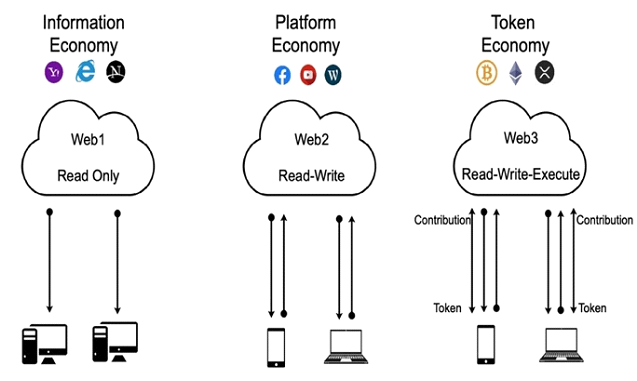
Fig. 1.The evolution of the Internet from Web1 to Web3 [1].
Blockchain is a disruptive technology due to its decentralization, traceability, and tamperproof features. The National Institute of Standards and Technology (NIST) defines interoperability in blockchain architectures as a composition of distinguishable blockchain systems that can execute transactions across multiple systems, where data recorded in one blockchain can be accessed by another in a semantically compatible manner [2]. A blockchain consists of a sequence of blocks, each of which contains an inverse hash pointing back to its parent block. There are a number of transactions stored inside each block, as shown in Fig. 2 [3].
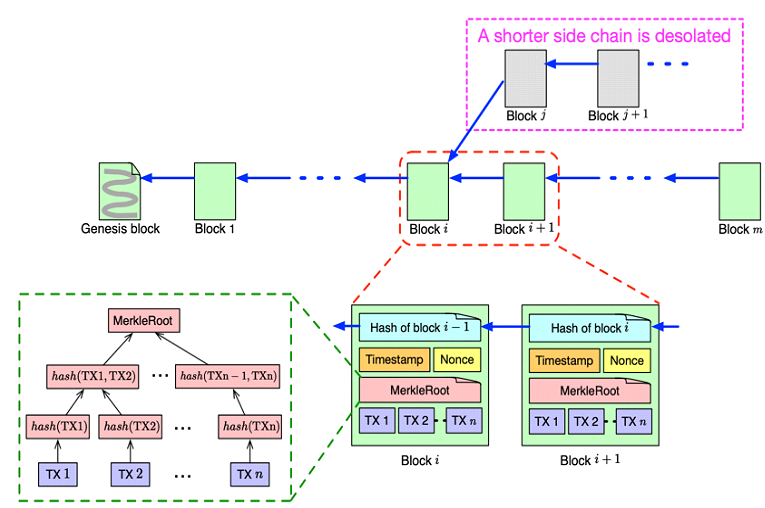
Fig. 2.Schema of blockchain [3].
Blockchain and Smart Contracts
Web3 is a new technology that uses blockchain, cryptocurrencies, and decentralized autonomous organizations (DAOs) to create a democratic and decentralized system for exchanging digital assets, managing e-commerce, social media, and gaming. It has become widely deployed in three primary areas: DeFi (Decentralized Finance), NFTs (Non-Fungible Tokens), and decentralized gaming. DeFi is a peer-to-peer ecosystem for financial services without intermediaries, NFTs are blockchain-verified digital assets, and decentralized gaming uses token-based economies and virtual worlds [4][5].
The emergence of Web3 technology has led to the creation of new economic models, one of which is the token economy. This model uses digital tokens as a means of exchange, which are stored on a blockchain. Access to these tokens requires a dedicated wallet software that manages the public-private key pair related to the respective blockchain address. Tokens can be programmed with conditional rights and can represent various assets, making them an effective tool for facilitating transparent and efficient collaborations. In addition, tokens can incentivize individuals to contribute to collective goals and can be designed for limited transferability within a community. One of the most important types of tokens in Web3 ecosystems are purpose-driven tokens, which aim to motivate individuals towards a greater goal beyond personal profit, thereby creating an operating system for a new economy that incentivizes and rewards users for contributing to the development and growth of decentralized applications (DApps) and blockchain-based networks.
Smart contracts are an important component of blockchain technology, which are used to automate processes via self-executing software. It is worth mentioning that each transaction needs to be validated across the blockchain network via consensus algorithms, as shown in Fig. 3, whereby Ethereum is the most widely used platform for developing smart contracts. Ethereum operates as a transaction-based state machine that uses accounts, including externally owned accounts (EOAs) and contract accounts. EOAs are controlled by private keys and do not have any associated code, while contract accounts are controlled by their associated contract code. Smart contracts provide greater contractual security at lower costs than traditional legal systems. Smart contracts can be used to create DAOs, which are organizations that operate on a decentralized network and are governed by smart contracts. DAOs can enable more democratic decision-making, as they allow individuals to vote on proposals and make decisions without the need for a central authority [6].

Fig. 3.Workflow of a smart contract [3].
Hive Mind: Extended Stigmergy in Dynamic Media
In his critically acclaimed book “Social Physics” [7], a term originally coined by Auguste Comte, the founder of modern sociology, Alex Pentland argues that social interactions (e.g., social learning and social pressure) are the primary forces driving the evolution of collective intelligence. According to Pentland, collective intelligence emerges through shared learning of surrounding peers and harnessing the power of exposure to cause desirable behavior change and build communities. Further, he observes that most digital media are better at spreading information than spreading new habits due to the fact that they don’t convey social signals, i.e., they are socially blind. However, electronic reminders are quite effective in reinforcing social norms learned through face-to-face interactions. He concludes that humans have more in common with bees than we like to admit and that future techno-social systems (like the emerging Metaverse to be discussed shortly) should scale up ancient decision-making processes we see in bees.
This conclusion is echoed by Max Borders through his concept of the social singularity that defines the point beyond which humanity will operate much like a hive mind (i.e., collective consciousness) [8]. Currently, two separate processes are racing forward in time: (i) the technological singularity: Machines are getting smarter (e.g., machine learning and AI), and (ii) the social singularity: Humans are getting smarter. In fact, he argues that these two separate processes are two aspects of the same underlying process waiting to be woven together towards creating new human-centric industries, where human labor will migrate into more deeply human spheres using the surpluses of the material abundance economy and the assistance from collective intelligence. More and more, we’ll act like bees to get big things done, whereby humans act as neurons in a human hive mind with blockchain technology acting as connective tissue to create virtual pheromone trails, i.e., programmable incentives. The traces left in the medium may be interpreted as a form of collective memory. According to [9], the usual assumption is that the medium is passive, meaning that it does not modify the traces. However, in dynamic media, which may be constituted by a population of other types of agents, the medium has some effect over the traces, giving rise to the term extended stigmergy. Once the medium has some effect over the traces the door is open for new types of dynamic virtual environments, such as the emerging Metaverse.
The Emerging Metaverse
With the mass digital adoption of remote work and online social activities accelerated by a global pandemic, we may finally find ourselves on the verge of something big and potentially paradigm-shifting: The Metaverse. It will surround us both socially and visually and might be viewed as the next step after the Internet, similar to how the mobile Internet expanded and enhanced the early Internet in the 1990s and 2000s. The Metaverse ought to have the following main characteristics: (i) It must be a shared experience; (ii) it must be possible to purchase and sell things to each other in a virtual economy; and (iii) it has to be possible for people to participate in activities that combine the real and virtual worlds [10]. Several companies have already embraced the Metaverse. Apple, Google, Samsung, The Walt Disney Company, Nintendo, Nvidia, Facebook (renamed Meta), Amazon, Microsoft, Epic Games, and others are involved. For instance, recently, on January 18, 2022, Microsoft has announced the acquisition of game developer and interactive entertainment content publisher Activision Blizzard in an all-cash deal worth almost $69 billion. A rising number of organizations are searching for ways to use it. While other businesses are still figuring out what the term means, the Metaverse is already gaining traction in the gaming industry, with Epic Games and Roblox leading the charge. The two video gaming titans present a vision of what the Metaverse may be in terms of content and audience. In fact, gamified experiences based on emerging Web3 technologies will be instrumental in providing a system of incentives, which enables players to earn tokens in the Metaverse and purchase digital items such as player equipment, avatar clothing, and NFTs. These play-to-earn and play-to-own activities to earn tokens in the Metaverse create not only its own Metaverse economy but also community [11].
In his critically acclaimed book “The Metaverse: And How It Will Revolutionize Everything, ”Canadian writer Matthew Ball argues that one of the most exciting aspects of the Metaverse is how poorly understood it is today [12]. Ball observes that for all the fascination with the Metaverse, the term has no consensus definition or consistent description. Most industry leaders define it in the manner that fits their own worldviews and/or capabilities of their companies. Notwithstanding, it is fair to assume that there can be only one Metaverse – just as there is “the Internet,” not “an Internet” or “the Internets.” Ball opines that it is perhaps from Neal Stephenson’s original vision and origins of the Metaverse described in his seminal novel Snow Crash, where we find the best insight into what the eventual Metaverse might look like [13].
The use of gamification and play-to-earn/own features for earning tokens is instrumental in creating a Metaverse economy and community. For illustration, we explore the benefits of blockchainization for the use cases of three well-known offline and online games. First, the blockchain-enabled trust game, which involves pairs of human players anonymously exchanging a fraction of their endowment. It was shown that a small deposit of only 2 Ether significantly increases the average normalized reciprocity and social efficiency. These metrics are useful in measuring human capabilities and equity in a new society. The advantages and disadvantages of various VR/AR/XR head-mounted devices for improved Metaverse interaction were examined for the origami game. The origami game requires players to fold a cube with the help of VR/AR/XR devices. The obtained results indicate that online players can complete the task faster in the mirrored virtuality realm. Further, the blockchainized multiplayer version of the Wordle game is studied. The game requires players to find a daily changing secret word within six tries. Our results show that blockchainization significantly reduces the task completion time (TCT) and the number of tries for expert players, allowing them to earn tokens and provide cognitive assistance to novice players via smart contracts. Figure 4 illustrates the beneficial impact of blockchainization on TCT and the number of tries for ten different secret words selected randomly from Wordle’s database.
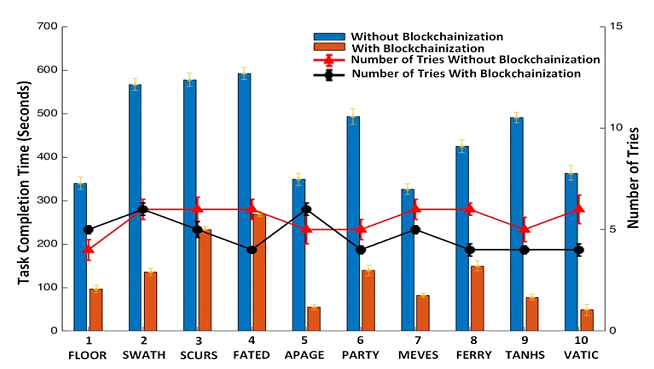
Fig. 4. Experimental results for multiplayer version of Wordle game with and without blockchainization with ten secret words selected randomly from Wordle’s database (depicted with minimum-to-maximum intervals).
Recent progress
Web3 and token engineering are closely related areas and their integration has the potential to create powerful decentralized applications. In [14], the authors discuss the challenges associated with transitioning from Web2 to Web3 applications and propose a framework for easing this transition. They highlight that the transition to Web3 is not simply a matter of technological Fig. 4 Experimental results for multiplayer version of Wordle game with and without blockchainization with ten secret words selected randomly from Wordle’s database (depicted with minimum-to-maximum intervals). upgrades, but also requires changes in mindset and user behavior. Furthermore, they note that current Web3 applications are often difficult to access and use, which creates a barrier to adoption. To address these challenges, the authors propose a framework that focuses on three key areas: access, usability, and user empowerment. The access component involves creating a more user- friendly gateway to Web3 applications, while the usability component involves improving the user experience within the applications themselves. The user empowerment component involves giving users more control over their data and digital identity. The authors also discuss several technologies that help facilitate the transition to Web3, including decentralized identifiers and decentralized storage systems. They also note that these technologies address issues related to data privacy and security, which are key concerns for users of future Web3 applications.
In [15], the authors propose the use of stimulative coordination models based on the emerging token economy to foster effective coordination and cooperation between enterprises that are both cooperative and competitive. The authors argue that traditional models of enterprise alliances are insufficient, often failing to address issues such as trust and mutual benefit. The authors suggest that the token economy promotes coordination and incentivizes enterprises to engage in mutually beneficial cooperation. The authors also propose two stimulative coordination models: the “Token Exchange Model” and the “Token Alliance Model,” as shown in Fig. 5. These models are designed to encourage collaboration and trust-building among enterprises, resulting in more successful alliances. The authors conclude that the use of stimulative coordination models based on the token economy has significant potential to improve the effectiveness of enterprise alliances and promote more successful cooperation between enterprises.
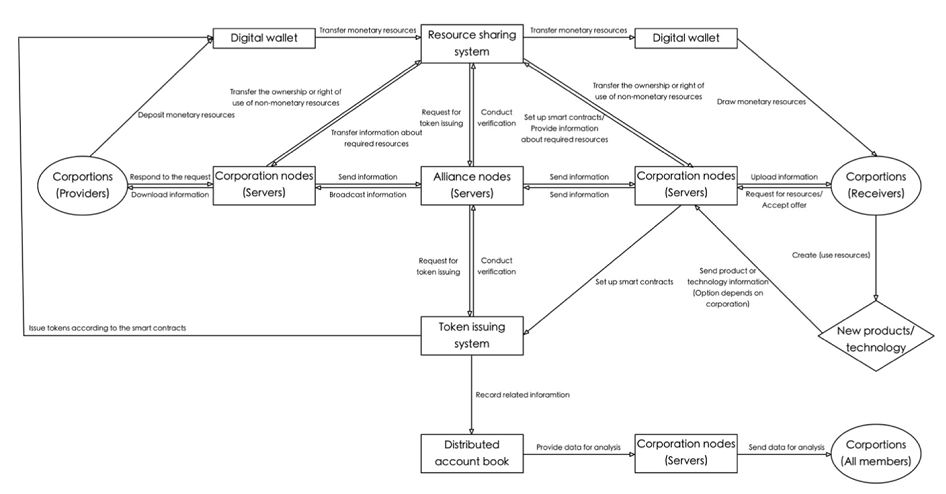
Fig. 5. Stimulative coordination model for cooperative enterprise alliances [15].
Another study [16] discusses the impact of blockchain-based cryptoeconomic tokens on human information-sharing behavior. The author notes that blockchain technology has the potential to revolutionize the way people share and access information, and cryptoeconomic tokens are a crucial aspect of this paradigm shift. The study explores whether the use of tokens is an effective incentive for users to share information on blockchain-based platforms. The author of [16] conducts a series of experiments to investigate how users respond to the introduction of tokens as an incentive for information sharing. The presented results suggest that the use of tokens have a positive impact on information sharing behavior, whereby the effectiveness of tokens as an incentive depends on the design and implementation of the token economy, including factors such as token supply and distribution. Fig. 6 illustrates the impact of different incentives (money/access/reputation) on the motivation (intrinsic/extrinsic) and information-sharing behavior (quality/quantity).
In [17], the authors investigate the use of blockchain technology to secure banking transactions without the requirement of tokens. They highlight that token usage may pose issues with respect to management complexity and expenses, potentially hindering its adoption. The authors present a novel method utilizing blockchain technology, without the need for tokens, to enhance the security of banking transactions. The novel method provides a more accessible, uncomplicated, and cost-efficient solution to a broader range of users. Further, the proposed system architecture includes a blockchain-based registry, which records transactions and provides an immutable record of all activities. Additionally, the article outlines the security measures of the system, such as the utilization of public and private keys to authenticate users and safeguard information.
Distributed ledger technology (DLT) enables the establishment of a token ecosystem without the need for trusted third parties. The mobility and transportation infrastructure resources and their usage are perceived as assets that can be converted into tradable tokens and managed through distributed ledgers [18]. The access to the infrastructure is restricted to token owners, while access is guaranteed by the system. The design and implementation of distributed ledgers depend on the specific requirements of each use case, resulting in a DLT-based IT infrastructure that includes various distributed ledger implementations. To create a generic architecture for a future mobility token economy, the authors adapt and apply a DLT design decision process to a mobility ecosystem. This process incorporates six potential use cases, as depicted in Fig. 7.
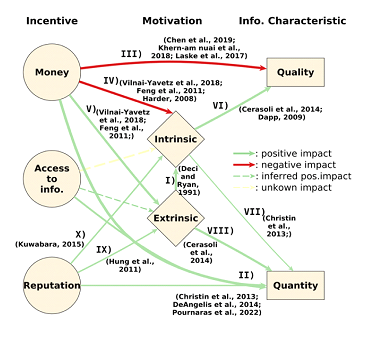
Fig. 6. Impact of incentives on motivation [16]..
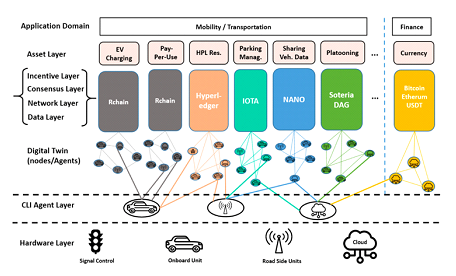
Fig. 7. Proposed architecture of the Token Economy for mobility [18].
Research challenges
Web3 and the token economy have been rapidly evolving and transforming the way we interact with digital systems. Despite recent progress, the following open research challenges remain that need to be addressed to ensure the sustainability and scalability of these systems.
- Interoperability:
One significant challenge is the lack of interoperability between different Web3 systems. Different blockchain networks and DApps operate in silos, making it difficult for users to interact with different platforms seamlessly. This problem limits the potential of Web3 to become a fully decentralized and interconnected system. The lack of standardization and compatibility between different blockchain networks can hinder the growth and adoption of the Metaverse. Towards this end, the development of cross-chain interoperability protocols that enable seamless communication and transactions between different blockchain networks is needed [19].
- Scalability:
Another challenge is the scalability of blockchain-based solutions. The current infrastructure of most blockchain networks limits their transaction throughput, leading to slow and expensive transactions. To address this challenge, various scaling solutions such as sharding, state channels, and sidechains have been proposed. In addition, the decentralized nature of blockchain networks makes it challenging to reach consensus on important decisions. Governance models, including liquid democracy and quadratic voting, appear to be a promising approach [20].
- Token-based Incentive Mechanisms:
Recall from above that interoperability is a major challenge facing Web3, as there are currently many different blockchain networks, each with its own unique protocol and consensus mechanism. This makes it difficult for these networks to communicate and transact with each other. Token engineering can solve this problem by creating a new economic paradigm that incentivizes collaboration and rewards contribution. This can be achieved through the use of interoperable tokens, which can be used as a common currency across different blockchain networks. These tokens can be used to incentivize developers to build applications that are compatible with multiple blockchain networks, thereby promoting interoperability between different networks. Also, solving scalability problems can be achieved through the use of token- based incentive mechanisms such as proof-of-stake and sharding. Proof-of-stake incentivizes users to stake their tokens in order to validate transactions on the network, while sharding enables the network to process transactions in parallel, thereby increasing the network’s transaction throughput.
- Token Mechanism Design:
Design: Mechanism design is a subfield of economics that deals with designing games to incentivize everyone to contribute to a collective goal. Token mechanism design, or token engineering, is an emerging field that requires a more nuanced approach to adequately address issues like the aforementioned free-rider problem and the resultant tragedy of the commons. Token engineering focuses on developing token-based economies through modelling and documentation that are implemented in the blockchain system. Token engineering uses simulation models such as agent-based modelling to handle complexity and produce multi-stakeholder models. For instance, activity-based management (ABM) was used to analyze the dynamics of the Bitcoin network and simulate the trading market, while generalized frameworks and simulation environments were created for other cryptocurrency and blockchain designs [21]. Token engineering comprises the theory, practice, and tools to analyze, design, and verify tokenized ecosystems. Up to date, however, there has been little overlap between the academic community and developers of purpose-driven tokens. Open research challenges in token mechanism design include the design of a bottom-up token engineering framework to enable the design of future tokenized ecosystems.
- Stigmergic Self-Organization:
Using stigmergy can be a solution for the aforementioned challenges. The concept of stigmergy, a class of self-organization mechanisms, is explored as a way to achieve internal communication and integrity in a society, borrowing from biological superorganisms with brain-like cognitive abilities found in colonies of social insects. With stigmergy, traces left by individuals in their environment feedback on them and incite subsequent actions, resulting in indirect communication and maintaining social cohesion. Figure 8 illustrates how the Internet of No Things can be transitioned into a stigmergy-enhanced Society 5.0 through the use of an online environment based on advanced Ethereum blockchain technologies and involving different types of offline agents. The DAO, a social system composed of intelligent agents coevolving into human-machine integration, is utilized for self- operation, self-governance, and self-evolution using operational rules recorded on the blockchain in the form of smart contracts.
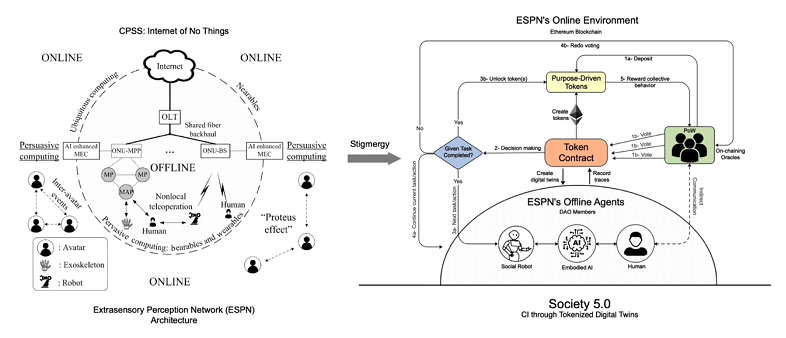
Fig. 8. Stigmergy enhanced Society 5.0 using tokenized digital twins for advancing collective intelligence (CI) in CPSS [18].
Researchers
Graduate Student
Advisor
Publications
- M. Maier, N. Hosseini, and M. Soltanshahi,
“INTERBEING: On the Symbiosis between INTERnet and Human BEING,”
IEEE Consumer Electronics Magazine, Special Issue Metaverse and eXtended uniVerse (XV): Opportunities and Challenges for Consumer Technologies, to appear
- M. Maier, M. Soltanshahi, and N. Hosseini,
“Metaverse as the New Eleusis 2.0: Are We in the Midst of the Next Renaissance?,”
IFSA Publishing, Blockhain and Cryptocurrency, vol. 1, no. 1, pp. 1-17, Sept. 2023
References
[1]
|
M. Maier, “6G and Onward to Next G: The Road to the Multiverse,” IEEE-Wiley Press, Feb. 2023.
|
[2]
|
Y. Pang, “A New Consensus Protocol for Blockchain Interoperability Architecture”, IEEE Access, vol. 8, pp. 153719-153730, Aug. 2020.
|
[3]
|
Z. Zheng, S. Xie, H.-N. Dai, W. Chen, X. Chen, J. Weng, and M. Imran, “An Overview on Smart Contracts: Challenges, Advances and Platforms”, Future Generation Computer Systems, vol. 105, pp. 475-491, April 2020.
|
[4]
|
L. Cao, “Decentralized AI: Edge Intelligence and Smart Blockchain, Metaverse, Web3, and DeSci,” IEEE Computer Society, vol. 37, no. 3, pp. 6-19, June 2022.
|
[5]
|
N. Kshetri, “Policy, Ethical, Social, and Environmental Considerations of Web3 and the Metaverse,” IT Professional, vol. 24, no. 3, pp. 4-8, May/July 2022.
|
[6]
|
S. Wang, L. Ouyang, Y. Yuan, X. Ni, X. Han, and F.-Y. Wang, “Blockchain-Enabled Smart Contracts: Architecture, Applications, and Future Trends,” IEEE Transactions on Systems, Man, And Cybernetics: Systems, vol. 49, no. 11, pp. 2266-2277, Nov. 2019.
|
[7]
|
A. Pentland, “Social Physics: How Good Ideas Spread – The Lessons from a New Science,” Penguin Press, Feb. 2014.
|
[8]
|
M. Borders, “The Social Singularity: How decentralization will allow us to transcend politics, create global prosperity, and avoid the robot apocalypse,” Social Evolution, July 2018.
|
[9]
|
L. Correia, A. M. Sebastião, and P. Santana, “On the role of stigmergy in cognition,” Progress in Artificial Intelligence, vol. 6, pp. 79-86, March 2017.
|
[10]
|
R. Higgins, “METAVERSE: A Definitive Beginners Guide to Metaverse Technology and How You Can Invest in Related Cryptocurrencies, NFTs, Top Metaverse Tokens, Games, And Digital Real Estate”, November 2021.
|
[11]
|
C. Hackl, D. Lueth, and T. Di Bartolo, “Navigating the Metaverse: A Guide to Limitless Possibilities in a Web 3.0 World,” Wiley, June 2022.
|
[12]
|
M. Ball, “The Metaverse: And How It Will Revolutionize Everything,” Liveright, July 2022.
|
[13]
|
N. Stephenson, “Snow Crash,” Bantam Books, June 1992.
|
[14]
|
G. Yu, X. Wang, Q. Wang, T. Bi, Y. Dong, R-P Liu, N. Georgalas, and A. Reeves, “Towards Web3 Applications: Easing the Access and Transition,” arXiv, Oct. 2022.
|
[15]
|
Z. Wang and X. Zhong, “Stimulative Coordination Models for Cooperative and Competitive Enterprise Alliances Based on Token Economy,” IEEE Access, vol. 10, pp. 43454-43472, April 2022.
|
[16]
|
M. C. Ballandies, “To Incentivize or Not: Impact of Blockchain-Based Cryptoeconomic Tokens on Human Information Sharing Behavior,” IEEE Access, vol. 10, pp. 74111-74130, July 2022.
|
[17]
|
N. A. Popova and N. G. Butakova, “Research of a Possibility of Using Blockchain Technology without Tokens to Protect Banking Transactions,” in Proc., IEEE Conference of Russian Young Researchers in Electrical and Electronic Engineering (EIConRus), pp. 1764-1768, Jan. 2019.
|
[18]
|
M. Maier, A. Ebrahimzadeh, S. Rostami, and A. Beniiche, “The Internet of No Things: Making the Internet Disappear and See the Invisible,” IEEE Communications Magazine, vol. 58, no. 11, pp. 76–82, Nov. 2020.
|
[19]
|
T. R. Gadekallu, T. Huynh-The, W. Wang, G. Yenduri, P. Ranaweera, Q.-V. Pham, D.-B. Costa, and M. Liyanage, “Blockchain for the metaverse: A Review,“ Future Generation Computer System, vol. 143, pp. 401-419, June 2023.
|
[20]
|
T. Salman, M. Zolanvari, A. Erbad, R. Jain, and M. Samaka, “Security Services Using Blockchains: A State of the Art Survey,” IEEE Communications Surveys & Tutorials, vol. 21, no. 1, pp. 858-880, Firstquarter 2019.
|
[21]
|
H. M. Kim, M. Laskowski, M. Zargham, H. Turesson, M. Barlin, and D. Kabanov, “Token Economics in Real Life: Cryptocurrency and Incentives Design for Insolar’s Blockchain Network,” IEEE Computer, vol. 54, no. 1, pp. 70-80, Jan. 2021.
|
|